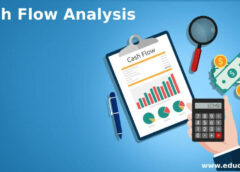
One of the most important aspects of conducting a regular budget review is tracking your income and expenses. This will help you to understand your cash flow, which is the difference between the money you earn and the money you spend. By analyzing your cash flow, you can identify where your money is going, how much you are saving or investing, and what changes you can make to improve your financial situation. In this section, we will discuss some tips and tools for tracking your income and expenses effectively.
Here are some steps you can follow to track your income and expenses:
1. Choose a method that works for you.
There are different ways to track your income and expenses, such as using a spreadsheet, an app, a notebook, or a combination of these. Choose a method that suits your preferences, habits, and goals. For example, if you are comfortable with technology and want to automate your tracking, you can use an app that syncs with your bank accounts and categorizes your transactions. If you prefer a more hands-on approach and want to have more control over your categories, you can use a spreadsheet or a notebook that you update regularly.
2. Record all your income and expenses.
To get an accurate picture of your cash flow, you need to record all your income and expenses, no matter how big or small. This includes your salary, bonuses, interest, dividends, gifts, tips, rent, mortgage, utilities, groceries, entertainment, transportation, insurance, taxes, debt payments, savings, investments, and any other sources or uses of money. You can use receipts, bank statements, invoices, pay stubs, or other documents to verify your income and expenses. You can also use tools like `track_income_expenses` to help you record your income and expenses automatically or manually.
3. Categorize your income and expenses.
To make your tracking more meaningful and useful, you need to categorize your income and expenses into different groups. This will help you to see how much you are earning and spending on different areas of your life, such as housing, food, health, education, leisure, etc. You can use standard categories or create your own custom ones. You can also use subcategories to break down your categories further. For example, you can have a category for food and subcategories for groceries, dining out, coffee, etc. You can use tools like `categorize_income_expenses` to help you categorize your income and expenses automatically or manually.
4. Review your income and expenses regularly.
To make the most of your tracking, you need to review your income and expenses regularly. This will help you to monitor your cash flow, spot any trends or patterns, and compare your actual income and expenses with your budgeted or expected ones. You can review your income and expenses daily, weekly, monthly, quarterly, or annually, depending on your needs and goals. You can use tools like `review_income_expenses` to help you review your income and expenses easily and effectively. You can also use charts, graphs, tables, or reports to visualize your data and make it easier to understand and analyze.
5. adjust your income and expenses as needed.
Based on your review, you can adjust your income and expenses as needed to improve your cash flow and achieve your financial goals. You can look for ways to increase your income, such as asking for a raise, starting a side hustle, selling unwanted items, or investing wisely. You can also look for ways to reduce your expenses, such as cutting unnecessary costs, shopping around for better deals, negotiating lower rates, or saving more. You can use tools like `adjust_income_expenses` to help you adjust your income and expenses optimally and realistically.
By tracking your income and expenses and analyzing your cash flow, you can gain more insight and control over your finances. This will help you to conduct and benefit from a regular budget review and make better financial decisions. You can use the tools mentioned above or other tools that you find helpful to track your income and expenses effectively. Remember, the more you track, the more you know, and the more you can do to improve your financial situation


